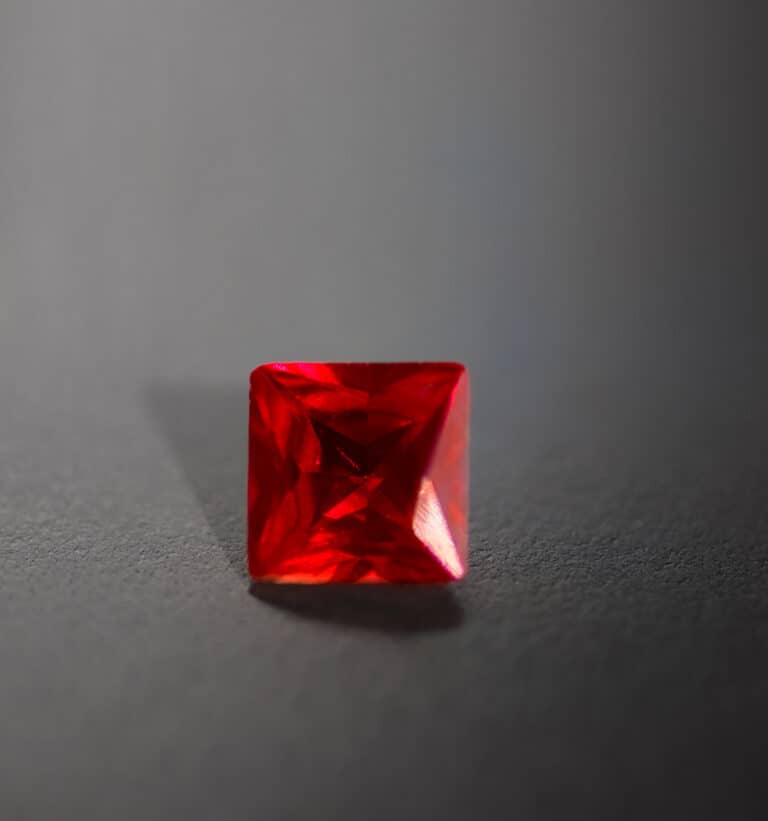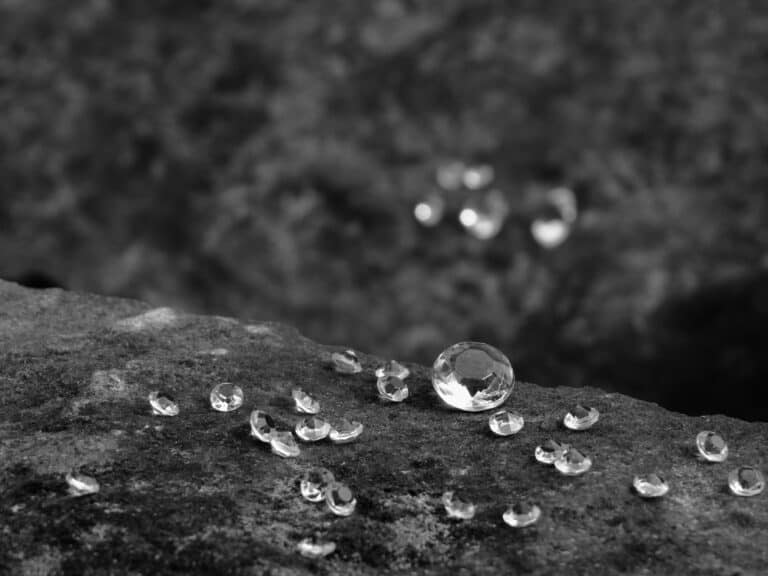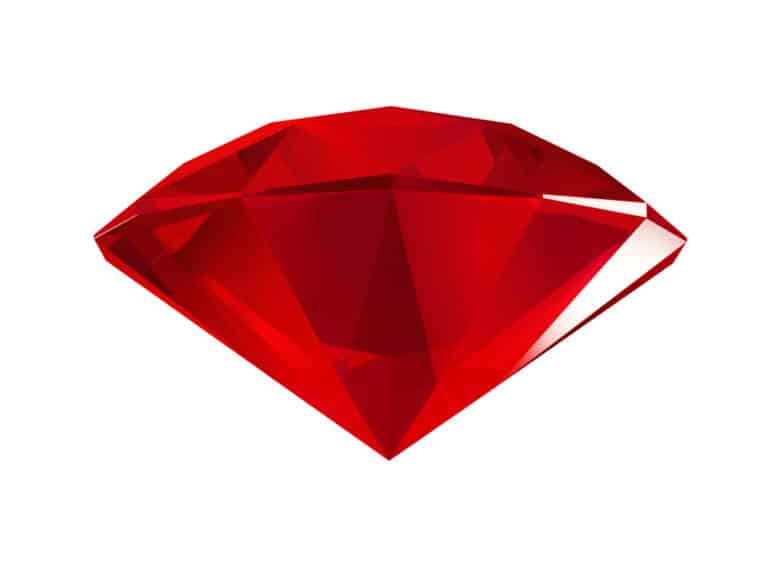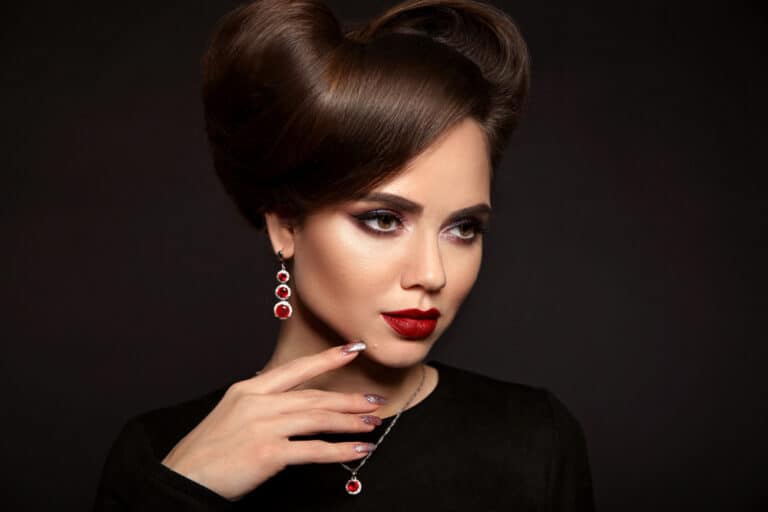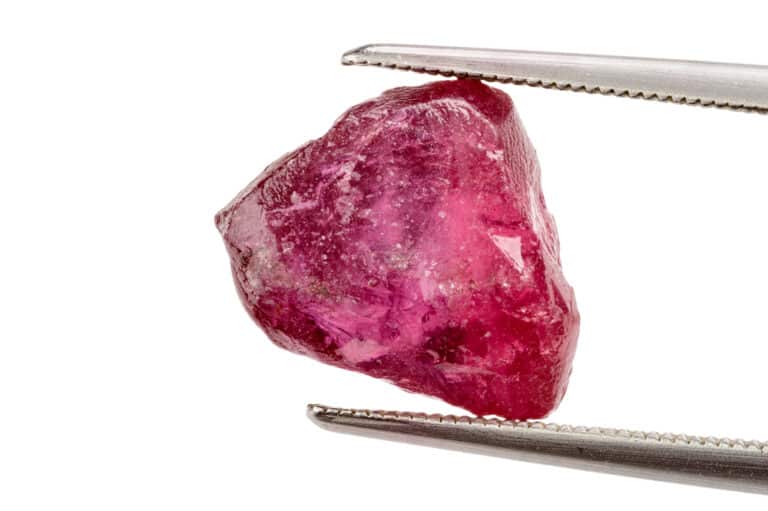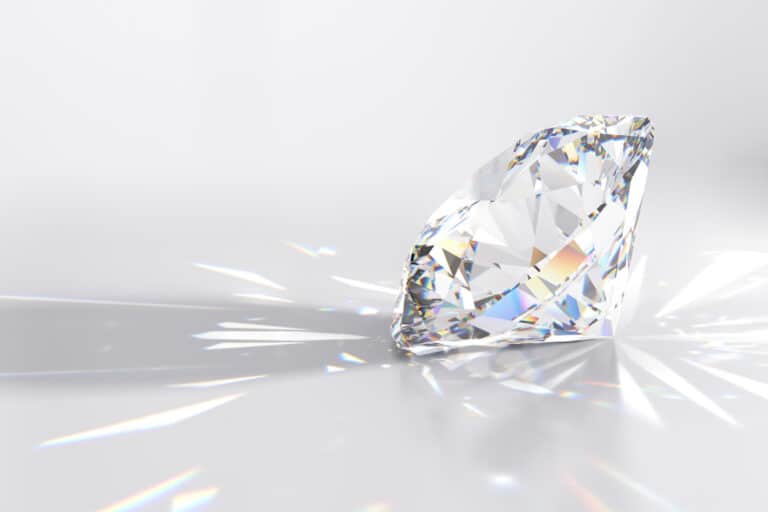Although diamonds have been the archetypal mineral engagement rings since they came to be, you shouldn’t underestimate rubies, either. These gorgeous red gemstones are lustrous and durable – perfect for a marriage proposal. But is a ruby more expensive than a diamond?
Ruby is typically less expensive than diamond. That’s particularly true for colorful fancy diamonds, the most expensive stones. However, high-end rubies can cost more than transparent diamonds. Experts will price diamonds and rubies based on the color, cut, clarity, and carat weight.
Now that we understand that diamond and ruby prices can vary significantly, we can examine why that’s the case. Read on to learn why these minerals are so expensive and how sellers can reach those fantastic prices.
How Do Sellers Decide A Stone’s Price?
Experts price diamonds and gems based on their quality; they reach conclusions from four primary criteria. These are the 4 C’s: color, cut, clarity, and carat weight.
When judging diamonds, the 4 C’s are clear and weighted equally. However, experts don’t have universal criteria to rate rubies. Instead, they focus on color since that is the most striking quality of a colored gemstone.
Color
Color is crucial to figure out a stone’s price. Historically, there wasn’t a consensus on how to describe a mineral’s color. However, now experts use three terms: hue, saturation, and tone. Together, these values precisely represent a diamond or gem’s appearance.
Hue refers to the gemstone’s primary color, like if it is red or colorless. Next is saturation, which describes how pure or intense that color is; a pure color is ideal. And last, we have tone, which tells us how light or dark the color is. Here, medium tones are perfect.
Rubies are most expensive when they are a deep, intense shade of red, an almost blood-red saturation. Likewise, pure red rubies are rarest, although purplish-red rubies are also valuable.
In contrast, pinkish rubies aren’t desirable; they’re too close to common pink sapphires.
However, this red color must be neither too light nor too dark. The ruby’s color is less vivid and striking if the tone falls too much to one side. So, it is less desirable.
In contrast, diamonds have a precise color scale. Experts rate them from D-Z, which indicates a diamond’s color is easy to notice. Saturation and tone determine this depth of color; here, a diamond’s hue is irrelevant.
That’s because D-grade diamonds are the best since they’re entirely colorless. On the other hand, Z-grade diamonds are the least popular. They’re light yellow or brown – dull!
It’s important not to forget about fancy diamonds, though. These rare minerals lie outside a diamond’s typical color spectrum. Instead, they have bright, intense colors. However, this color results from a diamond’s structural defects; fancy diamonds are anomalies, making them even rarer than their clear counterparts.
So, fancy diamonds are far more costly than rubies or standard colorless diamonds. Typically, the rarer the color, the more expensive the stone will be – green or blue diamonds are much harder to find than vivid yellow ones.
Cut
A stone’s cut also determines its price. Rubies and diamonds look best when cut correctly; a mineral with good faceting, dimensions, and symmetry will look superb. An excellent cut enhances the stone’s color and sparkle.
Nevertheless, a ruby’s cut is less important than a diamond’s. That’s because experts prize rubies based chiefly on color and clarity, not the faceting. Although good cuts are still relevant, they’re less crucial than they are for diamonds.
Cut can be the decisive factor for a diamond’s price. The cut’s technique, style, and goal can profoundly impact the diamond’s appearance and size.
Clarity
Diamonds and rubies can have inclusions – foreign materials that make the gem less transparent. Not only that, but inclusions also harm the stone’s crystal structure, making it more vulnerable to damage.
So, inclusions lower a mineral’s cost. Ideally, gemstones and diamonds should be free of visible inclusions – they must be ‘eye-clean.’
Furthermore, it’s best if the stone is naturally free of inclusions. Although removing them from most minerals is possible, that process risks damaging the crystal’s integrity and making it less valuable overall.
Since diamonds tend to have fewer inclusions than rubies, they’re costlier.
However, rubies benefit from specific inclusions. Rutile silk can make ruby more brilliant because it scatters the light entering the stone. So, it sparkles more. Similarly, rubies with asterism – a star pattern in the jewel – are also rare and beautiful.
Carat Weight
Carat weight refers to the mineral’s size; one carat equals 0.2 grams. So, the greater the carat weight, the larger the gem and the rarer it is. And, of course, people prefer big stones in their jewelry, which further increases the demand.
Indeed, carat weight is the most crucial factor in determining a diamond’s price. It isn’t far behind in discerning a ruby’s value, either.
Usually, we expect the price to increase exponentially at one, three, five, and ten-carat weights – that’s true for both ruby and diamond.
However, it isn’t always that clear. Diamonds can have high carat weights without being particularly large; those diamonds are denser. That means they’ll sparkle more.
Rubies also have fascinating relations with carat weight. While diamonds that weigh over one carat are rare, a ruby of the same weight is far rarer. So, a one-carat ruby can be far pricier than a one-carat diamond, even though a diamond is typically more expensive.
The same idea applies to larger rubies, too. A five-carat ruby is exceedingly rare.
Other Factors
Tradition is an essential factor in a stone’s price. Not only are diamonds beautiful, but people also associate them with marriage and luxury. Because of that, sellers will often charge higher fees for diamonds, considering other factors.
Conversely, rubies have historically been birthstones and anniversary gifts. While these remain lovely events, they’re less important than marriage for most people. So, rubies were traditionally less desirable.
However, that started to change as ruby engagement rings became more popular.
Another factor we should consider is brilliance. That’s how well a stone reflects and refracts light entering its facets –an outcome of a gem’s cut. However, diamonds are inherently more brilliant than rubies, so they sparkle more.
Sparkles are essential for many people since it makes their jewelry more eye-catching. So, because diamonds sparkle more – they’re more brilliant – they cost more than rubies.
Synthetic stones, while free of inclusions, are also less valuable. That’s because you can’t find them naturally; jewelers produce them scientifically. While they can look beautiful, they’re less remarkable than their equivalent natural counterpart.

Conclusion
To conclude, diamonds are generally more expensive than rubies. That’s because they’re rarer stones that people have always associated with luxury. Not only that, but they’re more brilliant and, when fancy, can be more colorful. However, large rubies will typically cost more than clear diamonds of similar size.
References
- Ruby vs Diamond | Jewelry Guide from America’s Oldest Jeweler – Bixlers™
- Determining Gemstone Quality | A Guide to Judging Gemstones (thenaturalsapphirecompany.com)
- Brilliance | The Basics of an Important Gemstone Characteristic (thenaturalsapphirecompany.com)
- Determining the Value of Rubies vs. Diamonds | The Natural Ruby Company
- Ruby vs Diamond: Comparing the Two Valuable Stones (thediamondauthority.org)
- Is Ruby More Expensive Than Diamond? – Diamond101
- Ruby Gemstone: Price, Colors and Cut (diamonds.pro)

